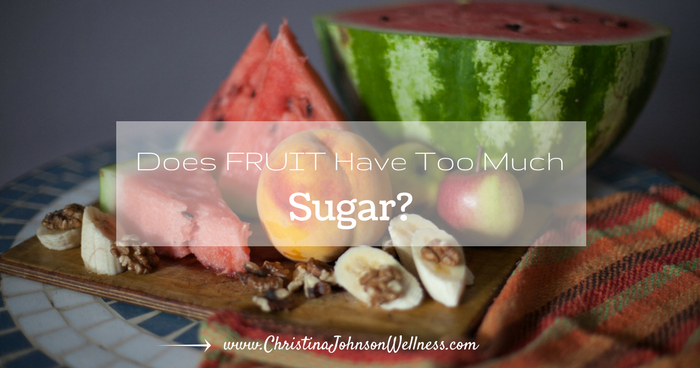I’ve recently had a few people ask me whether or not they should eat fruit if they are trying to cut back on sugar. This is a great question because we all know that fruit does contain sugar.
So today, I have a short and a long answer for you to answer this question…
Why Eating Fruit is Healthy
The short answer is yes, eating fruit can definitely be a part of a healthy eating plan. Let me share a few of the reasons why I believe this to be true.
First, fruit contains fiber, which slows down digestion and minimizes the impact sugar will have on your blood sugar levels.
In addition, fruit contains many great nutrients like vitamins, minerals, and antioxidants which are essential for optimal health.
Finally, most of us will admit that sometimes we just want to eat something sweet, and I think we can all agree that satisfying that sweet craving with some fresh pineapple is much better than diving headfirst into a carton of ice cream!
When to Limit Fruit
While fruit can be a healthy part of your diet, it’s important to keep a few considerations in mind so that it doesn’t get in the way of your health and weight loss goals.
Whole Fruits
-
- Stick with eating whole, unprocessed fruit. The best way to enjoy fruit is in its natural form. So, for example, feel free to eat a handful of berries, an apple, or some fresh pineapple.
-
- Avoid processed forms of fruit. When fruit is processed, it becomes stripped of many of its naturally occurring (and healthy!) nutrients, so avoid fruit juice and processed fruit products, like fruit strips.
- Limit dried fruit. Dried fruit is a more concentrated form of sugar, and it’s easy to eat more than one serving of dried fruit in a sitting. Most people find it helpful to eat dried fruit only on occasional and in small servings. When you do eat dried fruit, be sure it doesn’t have any sugars added to it.
What Are Your Goals?
If your goal is to lose weight or to stabilize your blood sugar levels, you many want to consider limiting the amount and types of fruit you are eating for a period of time.
-
- Eat 1-2 servings of fruit per day. You can also add in an extra serving or two of vegetables to make up the difference!
-
- Choose fruit that will have less of an impact on blood sugar levels. Examples of these types of fruits include strawberries, blueberries, raspberries, blackberries, grapefruit, lemons, and limes.
- Limit fruits that have more of an impact on blood sugar levels. Tropical fruits (such as mango and papaya) tend to have more of an impact on your blood sugar. While it is not necessary (for most people) to avoid these fruits completely, you may want to eat them in moderation.
Pay Attention to Your Body
The best way to figure out how many servings of fruit you should be eating and which types of fruit to eat is by asking yourself the following question….”How do I feel after eating a particular fruit?”
For example, if eating a banana leads to further sugar cravings, makes you feel tired an hour later, causes constipation, or makes you bloated, then you have a pretty clear answer that your body does not like bananas and it’s probably best to avoid or limit them.
Sugar Cravings
If you want further help getting your sugar cravings under control, then start eating more of the foods listed in my guide, “The Top 10 Foods that Make It Easier to Lose Weight & Beat Sugar Cravings”. These foods will keep you full and satisfied so that the cravings start to diminish.
If you’d like me to email you a FREE copy of this guide, “The Top 10 Foods that Make It Easier to Lose Weight & Beat Sugar Cravings”, simply click here and let me know where to send it!
Then, your sweet tooth truly can be satisfied with just a handful of berries!



